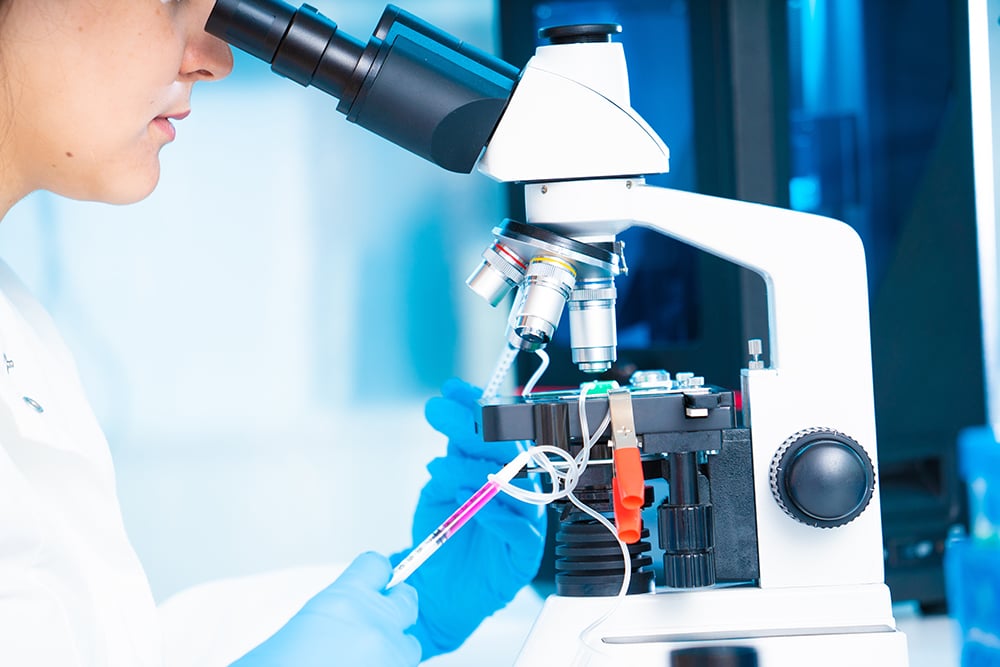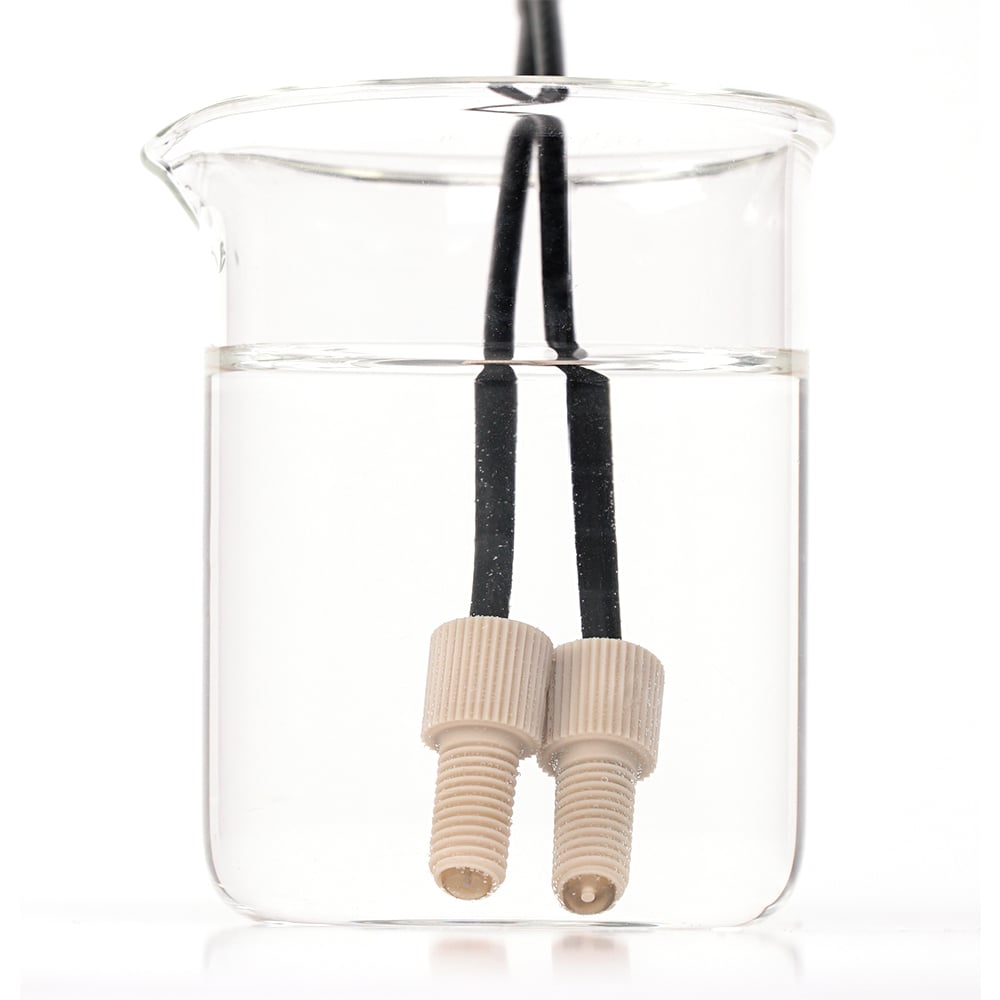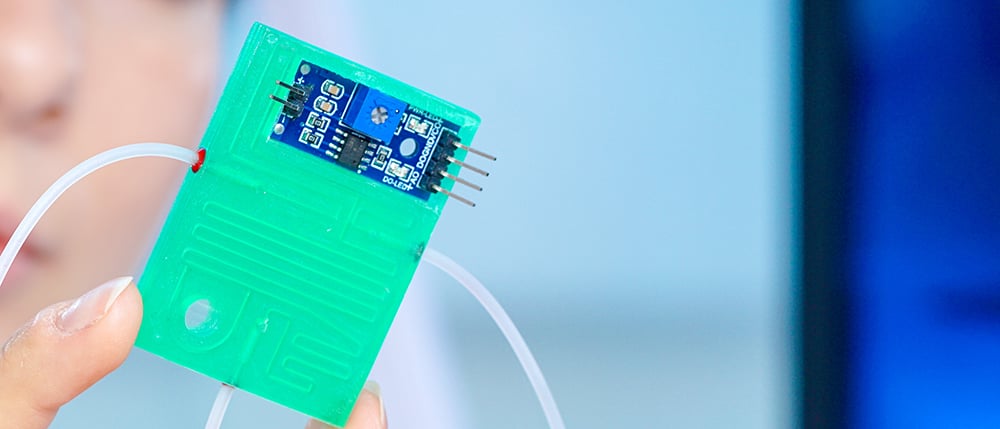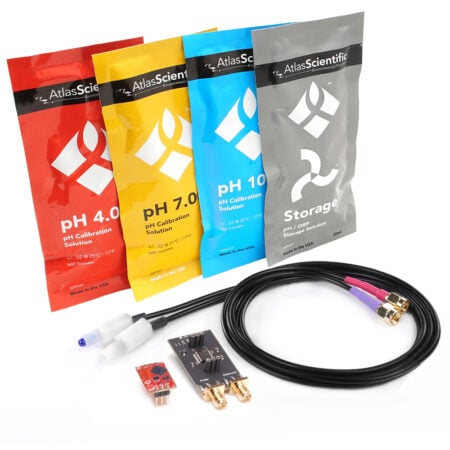

Best pH Probes For Hydroponics in 2025 – A Complete Buying Guide
Finding the best pH probe for hydroponics can make or break your growing success. In hydroponics, maintaining the correct pH is essential because it directly
# Type at least 1 character to search # Hit enter to search or ESC to close

No products in the cart.

No products in the cart.
Product Categories

Microfluidics enables precise manipulation of tiny fluid volumes, revolutionizing fields like drug discovery, cell biology, environmental monitoring, and medical diagnosis. This technology offers high precision, speed, and cost-effectiveness, driving innovations in lab-on-chip devices and organ-on-chip models for diverse scientific and industrial applications.
Microfluidics is the science and technology of manipulating and controlling fluids at the microscale – typically dealing with volumes thousands of times smaller than a single droplet. Imagine a laboratory shrunk down to the size of a credit card, where intricate networks of tiny channels and chambers orchestrate the flow of liquids with extreme precision. Well, this is the essence of microfluidics.
In this article, we will dive into the fascinating world of microfluidics, exploring its fundamental principles and the many ways it’s being applied to solve some of our most pressing scientific technological challenges.
Whether you’re a researcher, an industry professional, or simply curious about cutting-edge science, read on as we uncover the big impact of these small-scale marvels.
Microfluidics is an evolving field in science and technology systems that manipulate or process small amounts of fluids, using channels with dimensions of tens to hundreds of micrometers. To help you understand, if we look at one strand of human hair, its diameter is about 100 micrometers. Operating at this scale allows scientists, researchers, and engineers to leverage unique physical phenomena in fluids at the microscale, opening up countless possibilities.

The fundamental principle behind microfluidics is the ability to precisely control and manipulate fluids in extremely small volumes. These can range from microliters (10^-6 liters) to picoliters (10^-12 liters). This precise level of control allows a wide range of applications across different scientific and industrial fields.
Microfluidic devices can perform complex operations on a chip the size of a credit/debit card, reducing the need for large, expensive laboratory equipment.
The ability to manipulate tiny fluid volumes with high accuracy leads to more precise experiments and measurements.

Reactions and analyses can be performed much faster due to the small volumes involved.
Reduced reagent consumption and the potential for mass production of devices can significantly reduce operational costs.
Multiple experiments or analyses can be performed simultaneously on a single chip.
Various functions like mixing, detection, and separation can be integrated into a single microfluidics device.
The lack of standardization in microfluidic device design and fabrication can make comparing results across different platforms challenging.
While microfluidics excels at small-scale operations, scaling up for industrial applications remains difficult.
Seamlessly integrating microfluidic devices with existing laboratory equipment and workflows can be complex.

For medical applications, navigating the regulatory landscape for novel microfluidic devices can be time-consuming and costly.
The advantages of microfluidics have led to its rapid use across a wide range of applications.
One of the most successful areas for microfluidics is in medical diagnosis. Microfluidic devices, often referred to as ‘lab-on-a-chip’ systems, can perform complex diagnostic tests quickly and with minimal sample volumes. This is particularly important for rapid results like in point-of-care testing.
In the field, microfluidic devices are used to develop portable HIV tests to provide results in minutes rather than hours or days. Microfluidics is also used in microfluidic-based glucose monitors to allow diabetics to monitor their blood sugar levels with just a tiny drop of blood.
In the pharmaceutical industry, microfluidics is used to streamline the drug delivery process. For example, microfluidic devices can be used to perform high-throughput screening of drug candidates, enabling researchers to test thousands of compounds efficiently and quickly.

Microfluidics are also found in ‘organ-on-a-chip’ devices to stimulate the function of human organs, revolutionizing the drug testing sector. In the future, these devices may allow more accurate predictions of how drugs will behave in the human body, possibly reducing the need for animal testing and speeding up the drug development process.
Microfluidic technology is playing a key role in environmental monitoring. Compact, portable microfluidic devices can be used to detect pollutants in soil, water, and air with high sensitivity and specificity. This is particularly valuable for on-site testing in remote areas or resource-limited settings.
Some researchers have developed microfluidic devices that can detect trace amounts of heavy metals in water samples, providing a cost-effective solution for monitoring water quality in developing countries.
Microfluidics has opened many doors in cell biology, particularly in the field of single-cell analysis. Microfluidic devices can isolate, manipulate, and analyze individual cells with remarkable precision.
Microfluidics has allowed researchers to study cellular heterogeneity, track cell lineages, and perform single-cell genomics and proteomics. This is essential for understanding complex biological processes and developing personalized medical conditions.
In the chemistry field, microfluidic reactors are used to optimize chemical reactions and synthesize compounds more efficiently.

The precise control of microfluidic systems over reaction conditions and the ability to perform rapid, small-scale experiments is what makes this innovation an invaluable tool for process optimization and the discovery of new materials.
Microfluidics is finding applications in food safety testing and agricultural research. Microfluidic devices can rapidly detect foodborne pathogens, ensuring the safety of food supplies.
In the agricultural industry, microfluidics is being used to study plant physiology at the cellular level and to develop more efficient fertilizers and pesticides.
pH and temperature are crucial in many microfluidic applications. Precise control and monitoring of pH and temperature are important for maintaining optimal conditions in microfluidic experiments and processes. This is where specialized microfluidic tools come into play.
At Atlas Scientific, we are leading the way in environmental monitoring solutions, offering micro kits specifically designed for pH and temperature monitoring in microfluidic systems.
The Atlas Scientific Micro pH Kit is a complete solution for integrating pH monitoring into microfluidic devices. This kit includes everything needed to create an embedded microfluidics pH monitoring system.

Key Features of the Micro pH include:
At the heart of the Micro pH Kit is the Micro pH Probe. This miniaturized pH sensor is specifically designed for use in microfluidic channels and small-volume applications.

The Micro pH Probe offers:
Temperature control is crucial in many microfluidic applications. The Atlas Scientific Micro PT-1000 Temperature Kit provides a complete solution for precise temperature monitoring in microfluidic systems.

This kit features:
The Atlas Scientific Micro PT-1000 Temperature Probe was designed for a wide range of microfluidics and other small space applications.

Oxidation-reduction potential (ORP) is an important parameter in many chemical and biological processes. The Atlas Scientific Micro ORP Kit provides a complete solution for integrating ORP monitoring into microfluidic systems.

The kit includes:
Benefits of the Micro ORP Kit:
The Micro ORP Probe is a miniature sensor specifically designed for ORP measurements in small-volume applications.

Key features:
The Micro ORP Probe is invaluable in microfluidic applications such as:
As microfluidics continues to evolve, several trends are emerging:
Advances in 3D printing technology are making it easier and more cost-effective to produce custom microfluidic devices. This is modifying access to microfluidic technology and enabling rapid prototyping of new designs.

The integration of artificial intelligence (AI) with microfluidic systems is enhancing data analysis and process control. Machine learning algorithms can help optimize experimental conditions and interpret complex data sets generated by microfluidic devices.
Low-cost, disposable paper-based microfluidic devices are being developed for use in resource-limited settings. These devices may revolutionize diagnostics and environmental monitoring in developing countries.
NASA and other space agencies are exploring the use of microfluidic devices for various applications in space such as water quality monitoring and biological experiments in microgravity.
Microfluidics is more than just a scientific curiosity – it’s a transformative technology that’s reshaping how we approach problems in a wide range of applications. From enabling rapid disease diagnosis to revolutionizing drug discovery and environmental monitoring, microfluidics is proving to be a powerful tool.

If you would like to know more about our precision microfluidic kits, do not hesitate to contact the world-class team at Atlas Scientific.







Finding the best pH probe for hydroponics can make or break your growing success. In hydroponics, maintaining the correct pH is essential because it directly

The fastest way to reduce ammonia levels in a fish tank is to perform partial water changes, temporarily stop feeding fish, use chemical filtration, increase
Notifications